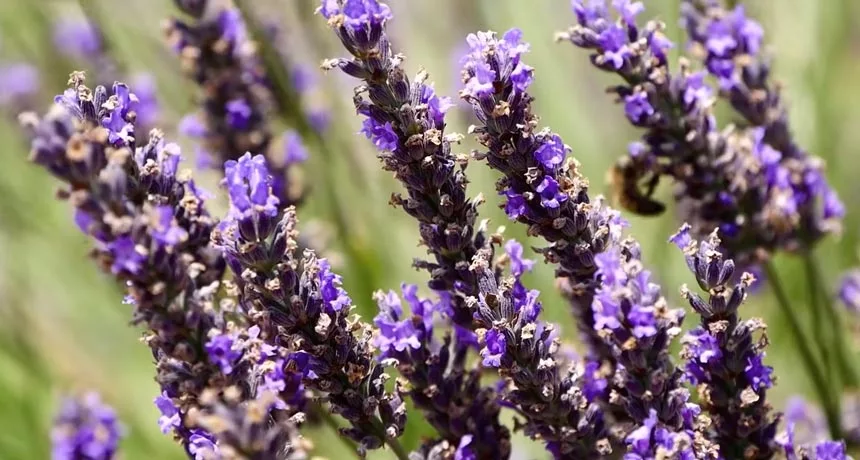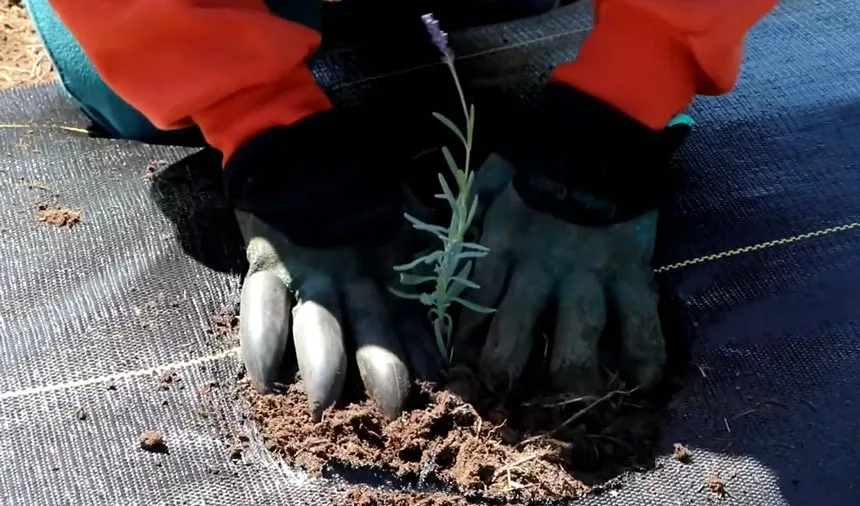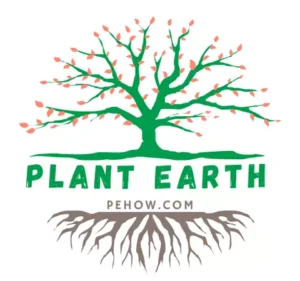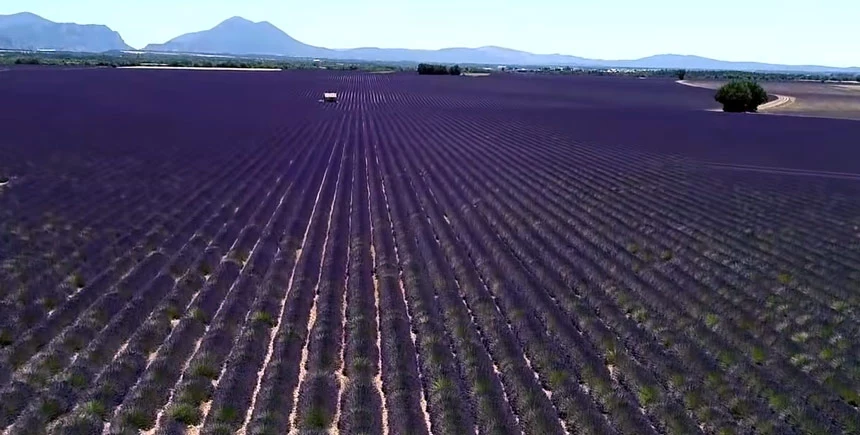Lavender farming is easy with the right tools and the right knowledge. Want to start a farm but not sure where to start? Don’t worry; you are not alone. I get a lot of questions on Twitter and forums about how to start a lavender farm.
Many growers in America are benefiting from lavender farms. For some, it is their main source of income. Others use it to supplement their earnings from other ventures.
The beauty of lavender farming is that it does not take much space to start. All you need is about an acre of land to start producing lavender for profit.
Building a farm becomes much easier if you have the right land. But finding the perfect land can be difficult. There are many factors to consider when searching for farmland. Keep reading to learn about the different lavender farms and what you should look for when choosing your land.
How to start a lavender farm – 10 Basic Steps
I have separated it into 10 steps to guide you properly in starting your lavender farm. By reading this blog in its entirety, I hope you will be smart enough to start a lavender farm from scratch.
1. Decide which species you want to grow on your lavender farm
When starting a lavender farm, it is important to decide which species of lavender you want to grow. There are many different types of lavender, each with its own characteristics and growing requirements.
Some of the most popular species grown for lavender farming include English lavender (Lavandula angustifolia), spike lavender (Lavandula latifolia), and French lavender (Lavandula stoechas). Each type of lavender has its advantages and disadvantages.

English lavender
English lavender is a popular species of lavender that is grown for lavender farming. It is known for its fragrant flowers and aromatic leaves. English lavender is a hardy plant that can tolerate cold weather and drought. It grows best in well-drained soil and full sun.
When growing English lavender, it is important to provide adequate space for the plants to grow. The plants should be spaced at least 12 inches apart. English lavender can be propagated by seed or cuttings.
English lavender is used for many different purposes, including aromatherapy, cooking, and herbal remedies. The flowers and leaves can be dried and used in sachets, potpourris, and lavender oil.
Spike lavender
Lavender is a versatile herb used for various purposes, from culinary to aromatherapy. When it comes to lavender farming, there are a few different species you can choose from. If you’re looking to start a lavender farm, one of the best species to grow is Spike lavender.
Spike lavender is a hardy plant that can thrive in various climates. It’s also relatively easy to grow, making it a good choice for beginning lavender farmers. Spike lavender has a strong scent and is often used in aromatherapy. It’s also been shown to have some beneficial properties for the skin.
If you’re interested in starting a lavender farm, Spike lavender is a great choice. It’s easy to grow and has a variety of uses.
French lavender
French lavender is another popular choice for lavender farmers. It’s a bit more delicate than Spike lavender, but it has a beautiful fragrance that’s perfect for use in perfumes and other cosmetics. French lavender is also a good choice for culinary uses.
Like Spike lavender, French lavender is relatively easy to grow. It can be a bit more challenging to keep alive in colder climates, but it can thrive in most conditions with proper care.
French lavender is a good choice if you’re looking for a lavender plant with a beautiful fragrance. It’s perfect for perfumes and cosmetics and can also be used in cooking.
Lavandin
Lavandin is a hybrid species of lavender grown commercially for its oil. It is a cross between Lavandula angustifolia (common lavender) and Lavandula latifolia (spike lavender). Lavandin oil is used in aromatherapy, cosmetics, and food products.
If you are thinking of starting a lavender farm, it is important to decide which species of lavender you want to grow. Lavandin is a hybrid species that is grown commercially for its oil. Lavandin oil is used in aromatherapy, cosmetics, and food products.
Lavandin oil has a higher yield than common lavender oil, making it more economical for a commercial farm. However, some people prefer the fragrance of common lavender oil over lavandin lavender oil. You may want to try growing both varieties to see which one you prefer.
Spanish lavender
Spanish lavender (Lavandula stoechas), also known as French lavender or butterfly lavender, is a small, compact plant that grows to about 2 feet tall.
This lavender species has deep purple flowers and blooms from mid-spring to early summer. Spanish lavender is native to the Mediterranean region and does best in full sun and well-drained soil.
2. Choose a Location to Start a lavender farm
As I said, the earlier right location is important for the firm. But how to choose the right place? Choosing the right place is difficult, but I will make it easy for you. The ideal location for lavender must have full sun, well-drained soil, and a pH between 6.5 and 7.5.
Lavender also needs space to spread out, so make sure you give it room to grow. You should also consider the climate of the area you want to start your farm.
Lavender farm needs good weather.
A lavender farm needs good weather to thrive. The climate must be mild, with full sun and well-drained soil. If you live in an area that does not have these conditions, it may be difficult to start a lavender farm.
Avoid frost on lavender farms.
When starting a lavender farm, one important factor to remember is the climate. Lavender cannot tolerate cold, so starting your farm in an area with a mild climate is best.
If you live in an area that experiences frost, it is important to take steps to protect your plants. One way to do this is by using frost protection covers. These covers will help keep your plants warm and protected from the cold weather.
Ideal soil for lavender
The ideal soil for lavender plants is well-drained and has a pH between 6.5 and 7.5. Lavender plants need full sun exposure to grow and thrive, so choosing a location for your farm with plenty of sunlight is important.
You should also avoid planting lavender in too dense or clay-like soil, as this can cause the roots to rot. If you are not sure what type of soil you have, it is always a good idea to have it tested by a professional before planting anything.
3. Acquire basic lavender farm tools
To start a lavender farm, you will need some basic tools. These tools include a hoe, shovel, rake, and watering can. You may also want to invest in a lawn mower, hedge trimmers, and other landscaping tools. Make sure you have a good storage shed to keep your tools in and a safe place to store any fuel or chemicals you may use.
Garden hoe
When choosing a garden hoe, there are a few things to consider. First, decide what type of hoe you need. There are three main types: the standard hoe, the scuffle hoe, and the Dutch hoe. The standard hoe is good for general use, while the scuffle hoe is better for weeding in tight spaces. The Dutch hoe is good for chopping weeds or breaking up soil.
Once you’ve decided on the type of hoe, you need to consider the size. Hoes come in different sizes, so choose one that will be comfortable for you to use. You also want to ensure the blade is sharp so it can cut through weeds easily.
Finally, think about the material the hoe is made from. Most garden hoes are made from metal or plastic, but some are made from wood. Wood hoes are lighter but may not be as durable as metal or plastic ones.
So, which garden hoe is right for you? Consider your needs and preferences, and then choose the best one for the job.
Scuffle hoe
The Scuffle hoe is a gardening tool designed for weeding in tight spaces. It has a sharp blade that cuts through weeds easily, and it is made from metal or plastic, so it is durable. The Scuffle hoe is a good choice for people who want an easy tool to use and quickly remove weeds from their garden.
Dirt rake
A dirt rake is a tool used to remove weeds, loosen soil, and aerate the roots of plants. It has a long handle and a flat head with sharp teeth. The dirt rake is made from metal or plastic and is very durable. It is a good choice for people who want a tool that can quickly remove weeds and loosen the soil.
Leaf rake
A leaf rake is a tool used to collect leaves, grass, and other debris from the ground. It has a long handle and a wide head with bristles or tines. The leaf rake is made from metal or plastic and is very durable. It is a good choice for people who want a tool that can quickly collect leaves.
Garden Shovel or D handle Shovel
When starting a lavender farm, it’s important to have the right tools to help you succeed. A garden shovel or D handle shovel is a basic tool you’ll need for your lavender farm. These shovels are perfect for digging soil and moving around large objects.
If you’re looking for a quality shovel that will last you for years, check out the selection at your local hardware store.
Hand tools
In addition to a shovel, you’ll need a few hand tools to help you with your lavender farm. A pair of gloves is essential for protecting your hands from the sharp lavender leaves. Garden shears or pruning shears will also come in handy for trimming lavender plants. And last but not least, a watering can or hose is a must-have for keeping your lavender plants hydrated.
4. Test Your Soil
Soil testing is an important first step in starting a lavender farm. You need to know what kind of soil you have before you can begin to amend it or plant your lavender. There are several ways to test your soil, including a home test kit or send a soil sample to a lab.
Once you have the results, you can begin to amend the soil if needed or select a location for your lavender plants that will be most suitable. Here are a few tips on how to test your soil:
Testing for Organic Matter
Soil testing is an important first step in starting a lavender farm. You need to know what kind of soil you have before you can begin to amend it or plant your lavender. One way to test your soil is to test for organic matter.
Organic matter is made up of decaying plants and animals. It helps to improve the structure and fertility of the soil. You will need a soil sample and a home test kit to test for organic matter. The kit will tell you about the percentage of organic matter in your soil.
If your soil lacks organic matter, you can add compost or other organic materials to improve it. Adding organic matter will help your lavender plants grow healthy and strong.
Testing pH Levels
Testing pH levels is another important step in starting a lavender farm. pH is a measure of how acidic or alkaline the soil is. Lavender plants prefer slightly alkaline soil with a pH of 6.5 to 7.5.
You can test the pH of your soil with a home test kit or by sending a soil sample to a lab. If your soil is too acidic or alkaline, you can add lime or sulfur to adjust the pH levels.
It is important to test the pH of your soil before planting your lavender, as it will affect their growth and health.
Checking Nutrient Levels
The next step in starting a lavender farm is to check the nutrient levels in your soil. Nutrients are essential for plant growth, and lavender plants need specific nutrients to thrive.
You can test the nutrient levels in your soil with a home test kit or by sending a soil sample to a lab. The test results will tell you what nutrients are lacking in your soil.
5. Build Your Soil
Soil preparation is key to a successful lavender farm. The best soil for lavender is sandy, loamy soil that drains well. If your soil is not ideal, you can improve it by adding organic matter such as compost or peat moss.
Sandy soil for a lavender farm
It’s important to have the right soil type for your plants. Sandy soil is ideal for lavender, as it drains well and provides good drainage. If your soil is not ideal, you can improve it by adding organic matter such as compost or peat moss. Be sure to put the organic matter into the soil before planting your lavender.
Loamy soil for a lavender farm
Loamy soil is also a good option for a lavender farm, as it has a mix of sand, silt, and clay. This type of soil drains well and Holds nutrients and moisture well. Again, if your soil is not ideal, you can improve it by adding organic matter such as compost or peat moss.
Clay soil for a lavender farm
Clay soil is not ideal for lavender, as it does not drain well and can be very dense. If you have clay soil, you can improve it by adding organic matter such as compost or peat moss.
6. Sufficient water supply
To ensure your lavender plants get enough water, you must water them regularly. Ensure the soil is moist but not wet, and water them at least once a week. You may need to water them more frequently in hot or dry weather.
Water after planting
Watering your lavender plants after planting is important to ensure they get enough hydration. You may need to water them more frequently in hot or dry weather. Checking the soil moisture before watering is a good way to ensure you provide enough water. If the soil is wet, you may be overwatering and should wait to water until the soil is dry to the touch.
Water when the soil is dry
Water as soon as possible when the soil is dry to the touch. This will help ensure your lavender plants get enough moisture and will help prevent them from wilting.
Water after pruning
Watering is important after pruning your lavender plants to help them recover from the stress of being pruned. Water them generously and make sure the soil is moist but not wet.
7. Decide whether to grow from seed or transplant seedlings

Growing from seed can be more economical, but it takes longer for the plants to mature. Transplanting seedlings can be more expensive, but the plants will be ready to harvest sooner. So, it depends on your timeline and budget as to which option is best for you.
Benefits of growing from seed
When growing lavender from seed, there are key benefits to keep in mind. First, it can be a more economical option, as you can save on the cost of seedlings. Second, it takes longer for the plants to mature, giving you more time to plan and prepare your garden.
And finally, growing from seed allows you to select the healthiest plants for your farm, ensuring you get the best possible yield. So if you’re looking for an affordable and sustainable way to start a lavender farm, growing from seed is the way to go.
Difficulty growing from seed
Growing lavender from seed can be difficult, as the plants require specific conditions to germinate and grow. The soil should generally be light and sandy, with good drainage and plenty of organic matter. The seeds also need ample sunlight and warmth to germinate, so it’s important to plant them in a sunny spot.
If you’re having trouble getting your lavender plants to grow from seed, you can do a few things to help them along. One is to make sure the soil is properly prepared before planting.
Another is to cover the seeds with a thin layer of sand or soil, which will help keep them warm and moist until they germinate. And finally, don’t forget to water them regularly! With a little TLC, your lavender plants should start growing nicely.
Benefits of planting seedlings
Transplanting lavender seedlings can be a great way to start your lavender farm quickly and easily. The plants come pre-grown and are also ready to harvest sooner than plants are grown from seed. So if you’re looking for a quick and easy way to start a lavender farm, transplanting seedlings is definitely the way to go.
There are a few other benefits to consider as well. First, transplanted seedlings are more likely to survive than plants grown from seed.
Second, the plants will be more mature right from the start, meaning you’ll get a higher yield from them in the end.
And finally, transplanting seedlings takes less time and labor than growing plants from seed, making it a more efficient option overall. So if you’re looking for an easy and affordable way to start a lavender farm, transplanting lavender seedlings is the way to go.
Difficulty in transplanting seedlings
Transplanting lavender seedlings can be difficult, as the plants require specific conditions to germinate and grow. The soil should generally be light and sandy, with good drainage and plenty of organic matter. The seeds also need ample sunlight and warmth to germinate, so it’s important to plant them in a sunny spot.
8. Plant your seeds or seedlings with care
Careful planting of your seeds or seedlings is essential for a lavender farm. Lavender plants do not like to be disturbed, so make sure to plant them in an area where they will have plenty of room to grow. When planting, make sure the roots are well-covered, and the plant is not too close to other plants.
9. Maintain and care for your lavender farm
Remember a few key things when maintaining and caring for your lavender farm. First, water your plants regularly, especially during hot weather.
Lavender needs at least an inch of water per week, so be sure to irrigate your plants if it doesn’t rain enough. You may also want to mulch around your plants to help retain moisture.
Another important thing to remember is that lavender is a herb like nitrogen-rich soil. You can add some organic matter to your soil to help boost its nutrient levels.
And finally, be sure to prune your lavender plants regularly; this will help them grow fuller and healthier.
If you can’t spend much time at the lavender farm, don’t forget to hire a maintenance person to help you!
10. More Help Starting a farm
When starting a lavender farm, it is important to do your research first. There are many things to consider, such as the climate and soil type in your area, what types of lavender plants you want to grow, what kind of farming methods you will use, and what products you plan to sell.
Many helpful resources are available online and in print to guide you through starting a lavender farm. The United States Department of Agriculture (USDA) has a website with information on starting farms and numerous books and articles on the subject.
One key thing to remember is that lavender is a drought-tolerant plant and does well in hot, dry climates. So if you live in an area with limited water resources, lavender may be a good choice.
Do your research, consult with experts, and plan carefully, and you can create a successful lavender farm that produces beautiful flowers and profitable products.
The Summary
Starting a lavender farm can be a rewarding and profitable endeavor, but it’s important to do your research and plan carefully before getting started. Following the tips in this article, you can set yourself up for success in growing beautiful lavender plants and producing high-quality products.
As you can see, there’s a lot to consider when starting a lavender farm. But if you take the time to research and prepare, you can create a thriving business that produces beautiful flowers and wonderful products.
Have you ever wanted to start your lavender farm? It’s a lot of work, but it can be a rewarding and profitable endeavor. I hope this article has given you some helpful tips for getting started.
Happy farming!



